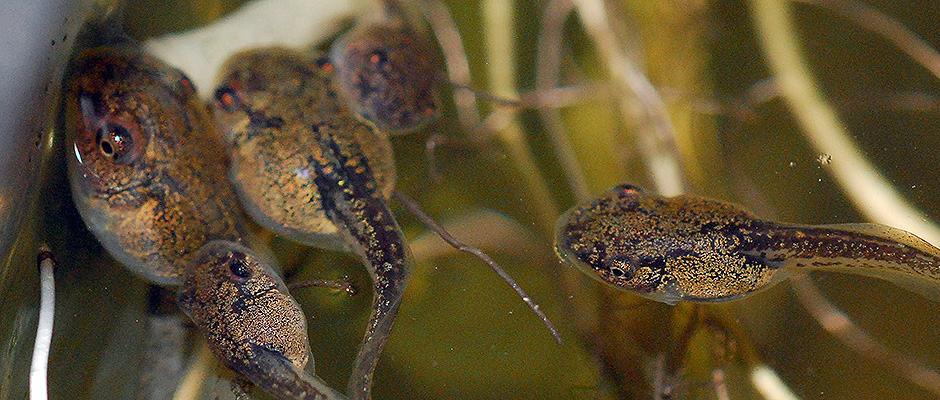Share this article
Predator Biodiversity Reduces Disease in Tadpoles
After conducting laboratory, field, and modeling studies, researchers at the University of South Florida recently found that biodiversity of predators that consume parasites, such as dragonflies, damselflies, and aquatic bugs, can limit the spread of parasitic infections in tadpoles and frogs.
While most studies focus on host diversity, this particular study looked at predator diversity. “We conducted a field survey of frogs, macroarthropods and infections in ponds in Minnesota and discovered that the more species of parasite predators, the fewer infections in amphibians,” said Jason Rohr, associate professor at USF’s Department of Integrative Biologist and lead author of the study. “Additionally, the diversity of these predators was a better predictor of flatworm infections than nutrients, frog immunity or the diversity and abundance of hosts,” Rohr said.
Interestingly, researchers noted more complex findings in the laboratory when they began searching for similar patterns using dragonfly larvae. If the dragonfly species ate both the parasite and the tadpole, there were more parasites in the environment per remaining tadpole, and the remaining tadpoles had higher infection levels. However, when the predator species only consumed the parasites, there were fewer parasites in the environment, and the risk of disease was reduced.
Next, researchers returned to a field survey and confirmed that the reduction of disease was mostly due to predators that ate only parasites and not the hosts. “This is really important because we found convincing evidence that diversity can suppress parasite transmission and we may be able to manage the diversity of parasite predators to reduce disease risk,” Rohr said. He also hopes to find out if these findings would apply generally to most host-pest systems. In fact, Rohr and his colleagues note similarities between their results and past research on the role of predator diversity in controlling crop pests.
“If we can convincingly demonstrate a meta-analytical result, general across all host pest systems, we may have identified a general mechanism in which predators can suppress pests,” Rohr said.
The researchers hope that this study can guide the management of predators to help reduce human and wildlife diseases along with pest populations.
“We hope to have improved human health and ecosystem services by providing decision makers, wildlife managers and farmers with guidance on how to manage predators to reduce pests and disease,” Rohr said.
Header Image:
Researchers found tadpoles are at less risk from parasitic infections when there is more diversity of parasite predators that consume the parasite but not the host.
Image Credit: Trish Hartmann via Flickr








